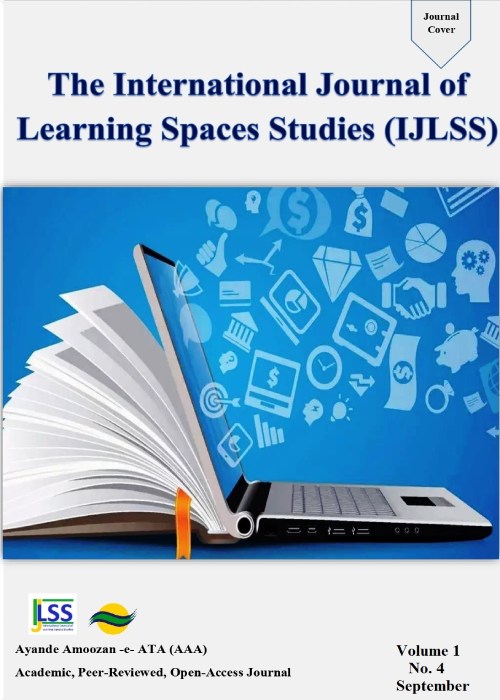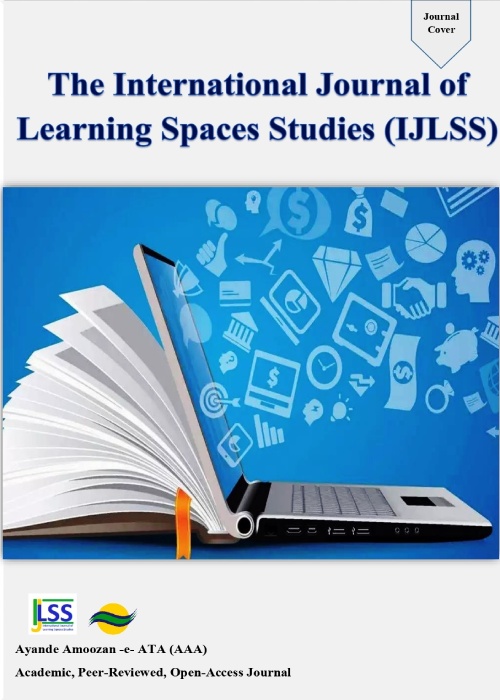فهرست مطالب

International Journal of Learning Spaces Studies
Volume:2 Issue: 3, Summer 2023
- تاریخ انتشار: 1402/06/08
- تعداد عناوین: 6
-
Pages 1-11Purpose
In this context, the current research has sought to identify the state of application and training of fair valuation accounting in banks with a qualitative approach. In this perspective, the impact of fair value accounting on the efficiency of banks is useful in making policy decisions in order to maintain the stability of the financial system through healthy banks.
MethodUsing a systematic review approach, the researcher analyzed the results and findings of previous researchers and identified the effective factors. 39 articles were selected from reliable databases.
FindingsThe identified categories are: the main criteria are flexibility, supervision, rules and regulations, organizational conditions, knowledge and training, government factors, needs assessment, economic growth, and performance transparency; Therefore, by combining these 9 criteria, all of which have certain sources and repetitions, it is possible to identify these conditions, therefore, to study how to implement fair value accounting methods on the efficiency of banks in different stages of the business cycle or economic conditions for policymakers to understand the health of banks as well as stability.
ConclusionThe financial system is essential. If fair value accounting practices improve banks' efficiency relative to historical cost principles, the additional improvement created by using unrealized gains can be used to generate higher returns on banks' credit portfolios. Credit growth depends on the capital level of each bank.
Keywords: Managers' Financial Education Level, Financial Reporting, Quality of Accruals, profit smoothing, profit sustainability -
Pages 12-21Purpose
Written Think-Aloud strategy, which is rooted in the think-aloud strategy, gives students mental order and helps teachers explore thought processes; specifically, these methods are useful to study test response processes and map cognitive models of complex thought processes. The purpose of this research was to investigate the effect of Writing mathematical thoughts and arguments in non-mathematical and non-formulaic language improved elementary students' mathematical performance.
MethodThe statistical population of the present study included the fifth-grade students of elementary school (n=60). The statistical sample was 32 students (control group (n=16) and experimental group (n=16)), who were selected by available sampling method. A pre-test-post-test design with a control group was used for the implementation of the present study.
ResultThe results covariance analysis test indicated that the difference in the average scores of students in the control and experimental groups is significant (p≤ 0. 000). This research also indicated that the use of written think-aloud strategy in students' math assessment led to students' success in solving math problems.
Discussion and conclusionThis research showed that the use of the Written Think-Aloud strategy in the math assessment of students affected their math success. This success in solving math problems can be related to creating mental order and focusing more on the task and finally strengthening self-regulation skills, which is a necessary condition for achieving any kind of success. It also provides the basis for receiving quick and timely feedback improves the thinking process and leads to success in solving problems.
-
Pages 22-29PurposeThe purpose of the research was to identify the knowledge components of sports brokerage in Iranian football. Considering the importance of football in the society, the knowledge and training of sports agency in Iranian football is necessary.MethodologyThe qualitative method of content analysis has been used in this research. This research is exploratory because it expands the knowledge and training of sports brokerage for the first time. Considering that football managers benefit from the acquired knowledge, the population is presidents and secretaries of current and former football federations, sports brokers, faculty members with simultaneous expertise in marketing and football, and senior sports managers of the country. With the targeted method, 10 people were considered as samples. In this research, the effective factors have been identified using content analysis theory. Coding of interview texts in MAXQDA software has been done by presenting research interview questions and interviewees' categories tables.FindingsBased on the theme analysis, 9 constructive themes were identified. These 9 constructive themes are sports management, political development, economic development, cultural development, sports diplomacy, software infrastructure development, hardware factors and supporting resources, brokerage knowledge, media interactions.ConclusionThis research helps to understand the increasingly important relationship between players and brokers. Based on the results obtained, it is suggested that if associations and/or players' unions want to prevent possible injury to players by their agents, it seems advisable to intensify and support information and awareness campaigns or to adopt new rules that market Adjust players' brokers more precisely.Keywords: Sports Knowledge, Sports Brokerage Training, Football Brokerage Knowledge
-
Pages 30-40PurposeThe research aims to identify the effective factors on sustainable rural tourism with the approach of social capital education. In the first step, the most important rural tourism criteria have been identified based on social capital education.MethodTheoretical foundations and research literature on rural tourism and social capital has been studied. Also, the professors and experts' views are used to validate and ensure the correctness of the selected indicators. The sample population was 10 managers of cultural heritage and tourism organization. FANP fuzzy network analysis method was used to ensure the correctness of the identified indicators and screening and statistics of the final indicators and including risk factors.FindingsThe main criteria are: rural tourism capabilities, rural tourism strategies based on education, government macro-plans and policies, social capital education solutions, and improving the performance of rural tourism. Based on the obtained results, the new circle of global development in the current era is witnessing wide competition based on innovation to obtain scarce and limited resources, which guarantees the path of long-term and sustainable development of the society.ConclusionThere are different types of innovations, including technological, economic, commercial, etc., which are effective in meeting the needs and creating human welfare based on the components of social capital education.Keywords: Sustainable Rural Tourism, Social Capital Education, Social Capital Education Solutions
-
Pages 41-51PurposeThe purpose of this research was to the effect of teaching social problem-solving skills on academic resilience and self-control of fifth-grade students in Shiraz city.MethodTherefore, in terms of its purpose, it is considered applied research; Because this research was conducted based on the data obtained from a certain statistical population of the fifth-grade students of primary school in Shiraz city and the results obtained in it can help the decision making of school administrators and that is why it is under applied research. On the other hand, in the current research, a field approach and questionnaire distribution among the members of the statistical sample is used to collect data. From the relevant formulas, the number of samples in each group was calculated to be 22; Therefore, out of 44 people participating in the study, 22 people from the control group and 22 people from the experimental group were separated in order to prevent the exchange of information. In order to analyze the hypotheses, the analysis of the covariance method was used.FindingBased on the obtained results, problem-solving skills training has had a significant effect on academic resilience in the post-test results of fifth-grade students' resilience variable. Also, teaching problem-solving skills has had a significant effect on students' self-control in the post-test results of the fifth-grade students' self-control variable.ConclusionA student with effective social skills establishes positive relationships with the teacher and classmates and creates an environment conducive to learning.Keywords: Teaching problem-solving skills, academic resilience, Self-control of students
-
Pages 52-63PurposeThe research aims to identify the effective factors on the health, safety and environment (HSE) risk literacy promotion model.Methodthe researcher has analyzed the results and findings of previous researchers by applying a systematic and meta synthesis approach and by performing the 7 steps of the Sandelovski and Barroso method, he has identified the effective factors. Among 556 articles, 55 articles were selected based on the CASP method, and the validity of the analysis was confirmed with the Kappa coefficient value of 0.711. In this context, to measure reliability and quality control, the transcription method was used, and its value was identified for the indicators identified at the level of excellent agreement. The results of data analysis collected in MAXQDA software led to the identification of 84 primary codes in 16 categories in 5 dimensions.FindingsFinally, five dimensions of planning, concepts of literacy development, implementation of education, evaluation and revision were identified as influencing dimensions of health, safety and environmental risk literacy.ConclusionOrganizations can focus on these factors in order to improve the literacy of HSE risks as one of the preventive and improving decision-making factors among their employees. Improving the literacy of HSE risks requires the attention and assistance of extra-organizational, organizational and individual factors.Keywords: Risk Education, Health, safety, environment, Health literacy, Safety Literacy, Environmental Literacy


